#Bishop of Jerusalem
Explore tagged Tumblr posts
Photo

Saint Cyril of Jerusalem Doctor of the Church 313-386 Feast Day: March 18 Patronage: Czechoslovakia, Tantur Ecumenical Institute in Jerusalem
Saint Cyril of Jerusalem had an exceptional education and was ordained a Bishop of Jerusalem during the Arian heresy. He instructed neophytes in the Catechism, explaining the Orthodox Catholic theology; this doctrine is still valuable today. He was exiled twice because of Arian followers, but returned in 378 to find Jerusalem torn in heresy, schism, and was crime-ridden. He worked hard to return it to the faith. At the Council of Constantinople, he championed orthodoxy, clarified that Christ has the same nature as the Father, and used the word “Consubstantial” in the Nicene Creed.
Prints, plaques & holy cards available for purchase here: {website}
56 notes
·
View notes
Text
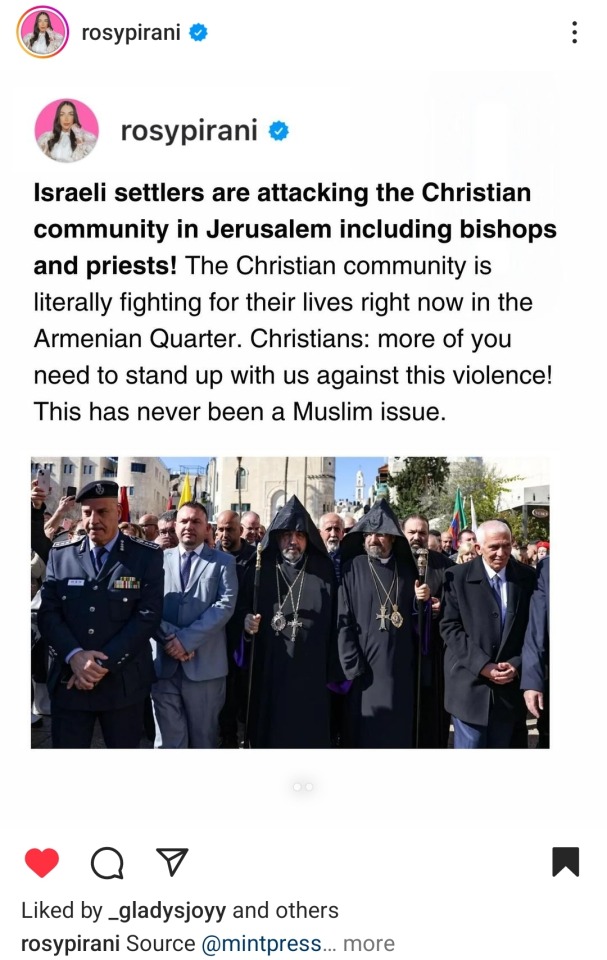
Israeli settlers are attacking the Christian community in Jerusalem including bishops and priests! The Christian community is literally fighting for their lives right now in the Armenian Quarter. Christians: more of you need to stand up with us against this violence! This has never been a Muslim issue. (28.12.2023)
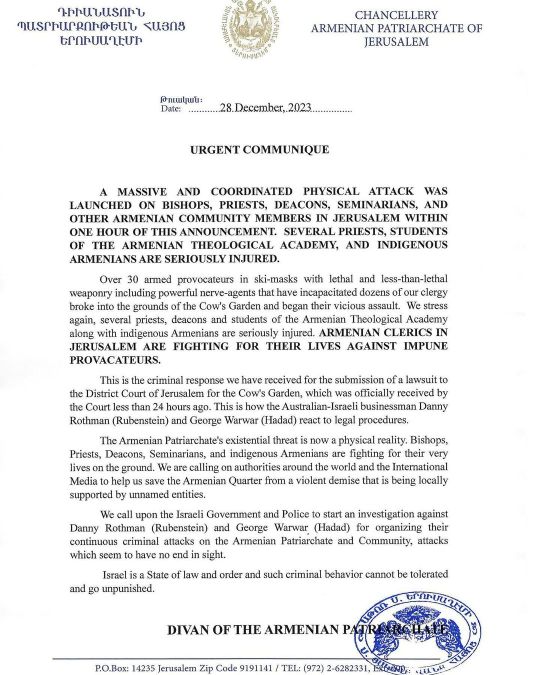
Chancellery Armenian Patriarchate of Jerusalem
28 December, 2023
A MASSIVE AND COORDINATED PHYSICAL ATTACK WAS LAUNCED ON BISHOPS, PRIESTS, DEACONS, SEMINARIANS, AND OTHER ARMENIAN COMMUNITY MEMBERS IN JERUSALEM WITHINONE HOUR OF THIS ANNOUNCEMENT. SEVERAL PRIESTS, STUDENTS OF THE ARMENIAN THEOLOGICAL ACADEMY, AND INDIGENOUS ARMENIANS ARE SERIOUSLY INJURED.
Over 30 armed provocateurs in ski-masks with lethal and less-than-lethal weaponry including powerful nerve-agents that have incapacitated dozens of our clergy broke into the grounds of the Cow's Garden and began their vicious assault. We stress again, several priest, deacons and students of the Armenian Theological Academy along with indigenous Armenians are seriously injured. ARMENIAN CLERICS IN JERUSALEM ARE FIGHTING FOR THEIR LIVES AGAINST IMPUNE PROVOCATEURS.
This is the criminal response we have received for the submission of a lawsuit to the District Court of Jerusalem for the Cow's Garden, which was officially received by the Court less than 24 hours ago. This is how the Australian-Israeli businessman Danny Rothman (Rubinstein) and George Warwar (Hadad) react to legal procedures.
The Armenian Patriarchate's existential threat is now a physical reality. Bishops, Priests, Deacons, Seminarians, and indigenous Armenians are fighting for their very lives on the ground. We are calling on authorities around the world and the International Media to help us save the Armenian Quarter from a violent demise that is being locally supported by unnamed entities. We call upon the Israeli Government and Police to start an investigation against Danny Rothman (Rubinstein) and George Warwar (Hadad) for organizing their continuous criminal attacks on the Armenian Patriarchate and Community, attacks which seem to have no end in sight.
Israel is a State of law and order and such criminal behavior cannot be tolerated and go unpunished.
(via. IG: rosypirani)
#Armenian Patriarchate#jerusalem#christians#priests#bishops#deacons#seminarians#students#free palestine#palestine#end israeli occupation#end israeli apartheid#end israeli siege#human rights#humanitarian crisis
3K notes
·
View notes
Text
BREAKING: More peace from the religion of peace:
A Muslim jihadist yelling "Allahu Akbar" attempted to murder a Christian Bishop, a pillar of the Christian community in Sydney Australia was repeatedly stabbed today while giving a sermon.
Bishop Emmanuel was hospitalized with multiple stab wounds. 3 others were also stabbed as they attempted to wrestle the jihadi to the ground. The man is smiling in the second picture attached.
Bishop Emmanuel is a popular figure in Sydney and was a vocal voice against Australia’s COVID lockdowns and vaccines calling it ‘mass slavery.’
The attack took place at Christ The Good Shepherd Church is in Wakeley, in Sydney's west.
Hundreds have now gathered outside the church reacting in anger and shouting ‘an eye for an eye’ as riot police have been deployed.
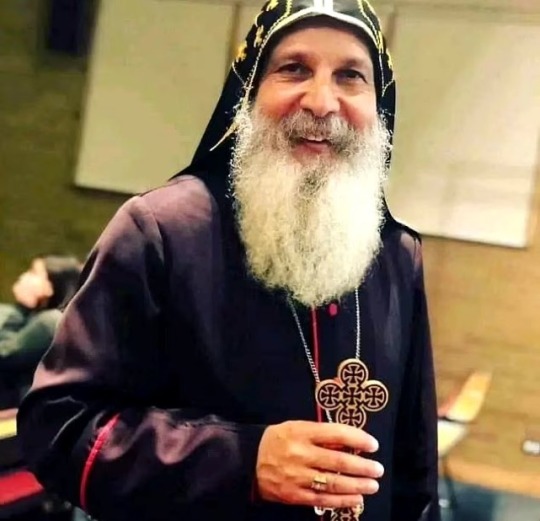
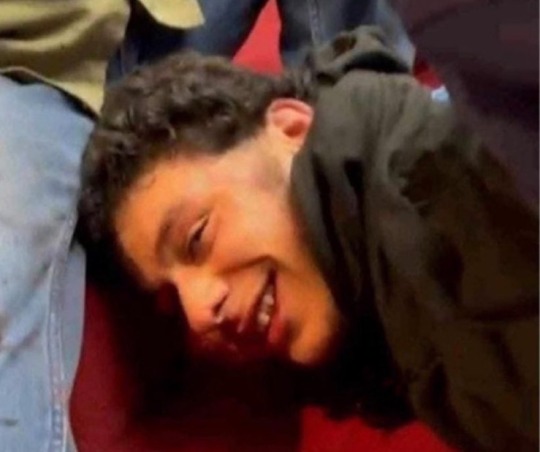
#religion of peace#religion of pieces#israel#secular-jew#jewish#judaism#israeli#jerusalem#diaspora#secular jew#secularjew#islam#Islamist#jihadi#jihad#Australia#Sydney#attack#Islamic supremacy#supremacy#bishop Catholic#Christian#Hamas
32 notes
·
View notes
Photo
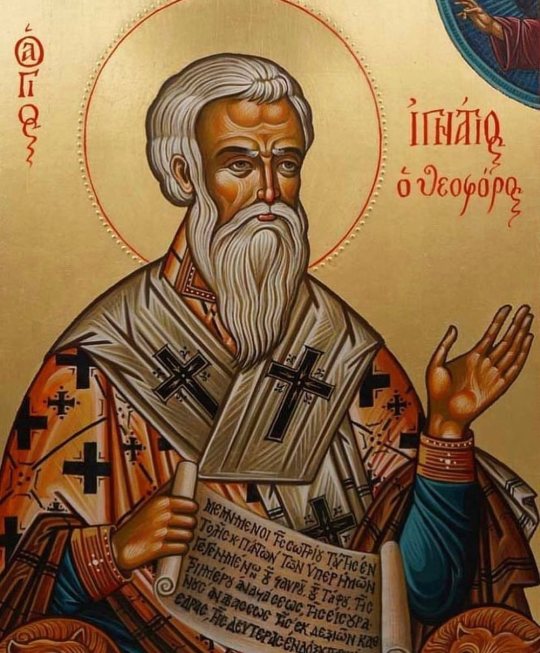
Today we celebrate the Hieromartyr Ignatius the God Bearer. According to tradition, Saint Ignatius was the child that Christ Himself held and said, "unless you turn and become as little children, you shall not enter into the Kingdom of Heaven”. As he grew up, Ignatius constantly dwelt on the things on high and thus earns himself the name "God-Bearer". Saint Ignatius was a fervent disciple of the Evangelist John the Theologian, with his fellow student Saint Polycarp of Smyrna. In time, he was elected Bishop of Antioch and spared no effort to build up the Church of Christ. The tradition of chanting antiphonally in church (i.e. in two choirs) was passed down to us from Saint Ignatius himself, who, in a vision, was transported to heaven and beheld the angles glorifying God in such a manner. During the persecution of the Emperor Trajan, Ignatius boldly confessed Christ as Trajan himself travelled through Antioch. Ignatius was arrested for not sacrificing to the idols and was condemned to death in Rome. The sentence was held in Rome because Trajan knew that if Ignatius were killed in Antioch, the Christians would venerate his relics. On his way to Rome, Ignatius fervently preached the Word of God and multitudes gathered to hear him. During this time, he wrote his many famous epistles to various people and churches, all of which survive today and are studied by theologians all around the world. Arriving in Rome, Saint Ignatius was sentenced to be thrown to the lions. When this occurred, the wild beasts tore the Martyr to shreds, leaving only his heart untouched. When the guards cut open his heart, they found the words "Jesus Christ" inscribed in gold writing. Hearing of the great courage of Ignatius, Trajan favoured him and ceased persecuting the Christians. May he intercede for us always + #saint #ignatius #ignatios #hieromartyr #martyrdom #godbearer #theophoros #martyrdom #christ #jesus #jesuschrist #christian #christianity #lions #antioch #bishop #jerusalem #rome #emperor #trajan #emperortrajan #polycarp #polycarpofsmyrna #smyrna #johntheevangelist #johnthetheologian #saintjohn #stjohn #john #orthodox #saintoftheday (at Antioch, Turkey) https://www.instagram.com/p/CmXabSMyGT5/?igshid=NGJjMDIxMWI=
#saint#ignatius#ignatios#hieromartyr#martyrdom#godbearer#theophoros#christ#jesus#jesuschrist#christian#christianity#lions#antioch#bishop#jerusalem#rome#emperor#trajan#emperortrajan#polycarp#polycarpofsmyrna#smyrna#johntheevangelist#johnthetheologian#saintjohn#stjohn#john#orthodox#saintoftheday
13 notes
·
View notes
Text
Practice English
adelphotheos – Google Search — Read on www.google.com/search
View On WordPress
#Adelphos#brother of God#brother of our Lord#English as a Second Language#ESL#First Bishop of Jerusalem#Jacob#Jacobean#la source#Liturgy ofJacques#Los Misterios#practice English#preGreek#Q#Santiago#Santiago de Chile#Santiago de Compostela#Santiago de Cuba#Santiago de Los Caballeros#st James#St. Iakovos#The Lives of the Saints
0 notes
Text
Let me talk about Mizrak
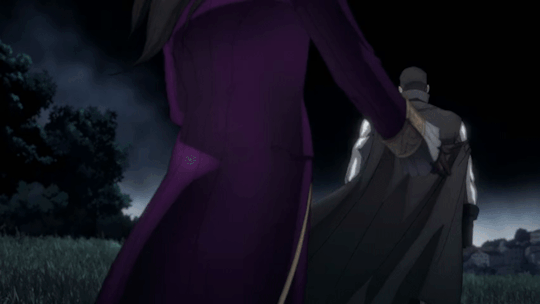
Yeah, this with all the entire Nocturne brainrot is going to continue for a couple more days at least. But the show has so many interesting themes and characters and I just love it so much. And after getting all my friends to watch the show, I got surprised by one of them being super angry about Mizrak.
Why? Well, because of the last scene with him and Olrox in the season and his words of: "You are just an animal that lost its soul centuries ago." And the friend considered that "being an asshole" and "cruel".
To which I say: Cruel? Yes. Asshole? No.
Let me explain.
First, let me make one thing clear: No, Mizrak is not a templar. I have seen that one too many times. He is not a templar. He is a monk knight of the order of St. John, so the Knights Hospitaller. Like the templars they were very much tied to the crusades originally, but they are not the same thing. There were a lot of orders and types of knights associated with the crusades. Templars were just one of them. (Do you guys wanna hear more about the templars? I can talk more about them.)
We know from bits and pieces of dialogue that Mizrak originates in Jerusalem (which is also where the order was founded). This is a gentle reminder: Israel as we know it today was not a thing back then. But Jerusalem was always a place of religious conflict as it holds importance in all three Abrahamic religions. Which was, what the crusades were all about after all. Before the time of the French Revolution, though, there was mostly some a conflict between the Ottomans and some Arab forces over Palestine. There were some Christian orders accepted within the city though.
Now, the Knights Hospitaller, who were accepted in Jerusalem, had a strong connection to France. Which... lead to problems, when some of the Arabs and the French got into problems. Which let to the Knights Hospitaller leaving for Malta. This too is referenced in the dialogue. (If you guys cannot tell: I am very happy with the amount of historical research put into this show!)
Mizrak looks to be in his early 30s. So I assume he entered the order in his mid-teens (which was a usual age to enter an order like that) and then probably left for Malta within a couple of years after that when the political situation got more charged. And then from Malta to France.
The Knights Hospitaller back then for all intent and purposes lived as militarized monks. That means they made vows of poverty, chastity and obedience. And this very much shines through with his character in so many scenes.
Of course we see that the entire "chastity" thing does not work out that well for him. But that is also why he clearly is shown to be conflicted about that entire thing. What he tries to uphold, though, is the obedience aspect of his vows. And that is, what his entire conflict is about.
See, what I love about this character is that there is all this delicious conflict.
I will iterate again: I grew up in a very, very conservative, strict, catholic household. Other kids got read fairytales for bedtime. My mother read me the bible. Priests and monks were people we intermingled with a lot. (Heck, the last pope? I met him when he was still a bishop.) And hence I got to make one very clear experience: There are three types of Catholics: Those, who focus on all the horrible things. Those, who focus on the literal stuff written in the bible. And those, who focus on the positive stuff. You know, the stuff with helping people, and being poor, and sharing, and being in general a good person. (Though the three types are not always mutually exclusive.)
And it is pretty clear that Mizrak is of the latter kind. He believes in the good he can do through his faith in God and Christ. But he has also grown up in an Order and a Church that puts a lot of focus on the idea of sin, on the idea of obedience, and the idea of the "natural order".
But there he is, with his Abbot collaborating with demons and vampires to enforce that "natural order", which among other things goes against their own vow of poverty. This is so clearly against Mizrak's believes. Because in his very core, Mizrak is a good fucking man. He is one of the good guys. Who wants to do good through his faith in God. And this conflicts for him.
So by the end of episode 7 he reached the point to go against his vow of obedience, because his faith in doing good was stronger, than his dedication to his vows. He very actively broke his vows in the eyes of his order, standing against his order, to protect those darn kids. Because it was the right thing to do. He is absolutely willing to do the noble sacrifice if that is what it takes to save those kids. And in comes that weird dude and takes this chance from him.
And his entire thing with Olrox... It seems very much that Mizrak is indeed gay. As the series so helpfully points out: Yeah, priests, monks, other clergy, and their vows of chastity were always a thing that rarely worked out. Again, as someone who grew up with close ties to the church: The fact that everyone is secretly fucking is... well known. As well as the fact that yeah, there are a lot of gay clergy. Mostly for the reason that they are shamed for their sexuality and then take the vows to not be tempted into homosexuality. Only to find that a priest school with a lot of other queer supressed men is exactly the place you do not want to be to not be tempted. (And that is all without going into all the non-con, pedophilia and what not. Things that were also already happening back then, I guarantee you.)
So, try to imagine that entire thing from Mizrak's perspective. There he is, already ashamed and suppressed about all of that and in comes this very, very seductive vampire man, who kinda seems to align with some of his values, but not with others. And who is emotionally unavailable as fuck, outright telling him that he does not love our dear Mizrak. Someone, who clearly is not for the vampires and your abbot, but also clearly not willing to take the other side. The side that you in your heart (even though it means standing against your order) know to be right. And this man, who claims to not love you, then comes in and tries to stop you from doing what is right.
Yeah, no fuck, Mizrak is a bit pissed at him. Especially as in that moment Olrox very clearly goes against Mizrak's ideals, that are all about self-sacrificially doing the right thing.
And I do think that Mizrak is right in one regard: Olrox lost his soul. He lost a part of himself. Through the trauma of colonialism, but he lost it never the less.
So, once more: Thanks the team for giving us another interesting, well-rounded religious character! CV already did so well with Isaac and Mizrak is sofar extremely promising in that regard.

#castlevania#castlevania netflix#castlevania nocturne#castlevania nocturne spoilers#castlevania mizrak#castlevania olrox#olrox x mizrak#mizrox
963 notes
·
View notes
Text
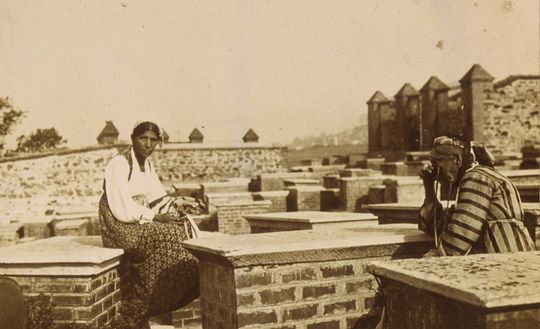



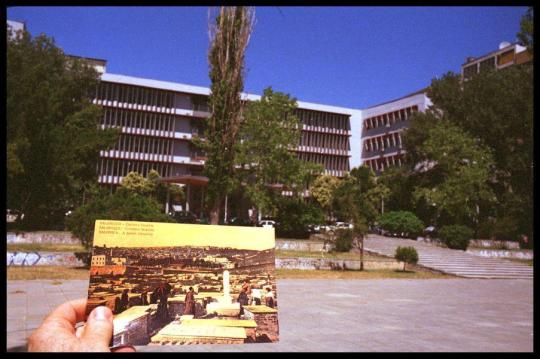
Sephardic Jews from Thessaloniki in their traditional costumes, in the city’s old cemetery, before the war // a contemporary photo that shows where the destroyed cemetery once was, which is now Greece's largest university, built partially on top of and with land and materials (particularly tombstones) stolen from the razed site.
Thessaloniki or Salonika, once referred to as “the Jerusalem of the Balkans” due to its Ladino-speaking Jewish majority, saw roughly 96% of its Jewish population murdered during the Holocaust. This mass destruction extended to the city's Jewish cemetery, which had been the country's largest, established in the 15th century and housing hundreds of thousands of Jewish graves until its razing by city authorities who had long desired to repurpose the land and resented the inconvenience of Jewish presence. Despite its large-scale destruction during German occupation in 1942, which was initiated and carried out primarily by Thessaloniki authorities with Nazi consent and arrangement, some parts of the cemetery survived intact as late as 1947. Many tombstones were subsequently appropriated and used by city authorities and the Greek Orthodox Church. After the war, people were still carrying away Jewish gravestones each day and regularly looting the cemetery in search of valuables. The city's officials, led by their mayor, completed the cemetery's destruction and sold the tombstones to contractors for use as building materials in various projects; as such many were and are still found in various walls, roads, structures, and churches around the city. A 1992 commemorative book pictures Greek schoolgirls playing Hamlet with skulls and other bones they found in the cemetery.
“[T]he ‘rape’ of the cemetery escalated, marble flooded the market, and its price plummeted. Jewish tombstones were stacked up in mason’s yards and, with the permission of the director of antiquities of Macedonia and overseen by the metropolitan bishop and the municipality, used to pave roads, line latrines, and extend the sea walls; to construct pathways, patios, and walls in private and public spaces though out the city, in suburbs such as Panorama and Ampelokipi, and more than sixty kilometers away in beach towns in Halkidiki, where they decorated playgrounds, bars, and restaurants in hotels; to build a swimming pool – with Hebrew-letter inscription visible; to repair the St. Demetrius Church and other buildings...” Devin Naar, Jewish Salonica: Between the Ottoman Empire and Modern Greece
Most of the efforts to return found tombstones throughout the city are led by Jews, particularly Jacky Benmayor, the curator of the Jewish Museum and last Ladino speaker in Greece, who has personally recovered hundreds of tombstones including his own family's. Surviving Greek Jews never received compensation for the confiscation of the land under the destroyed cemetery, upon which now partially rests Greece's largest university, Aristotle University, which also used Jewish gravestones as building material for its long-coveted expansion finally made possible by the dispossession and annihilation of the city's Jews. In 2014, 72 years after the cemetery's destruction and appropriation, a small memorial was established on campus grounds to acknowledge the Jewish cemetery the school is built on and with; the ceremony just 10 years ago involved the first-ever acknowledgement of the atrocities and apology from a Thessaloniki mayor. The memorial has been vandalised multiple times since its establishment.
#jumblr#jewish#jewish history#jewish photography#sephardic#holocaust#salonika#my posts#greece#don't feel very coherent about this one. doesn't a country's biggest university being built on and with jewish graves just say it all#72 years of silence and then a small memorial subject to frequent vandalism btw#this is the 'compensation' greek jews got#from an annihilation that didn't even spare the dead. a near-total obliteration of life and memory#the memorial pisses me off a little bc it's deliberately vague about very key local participation in these atrocities#reading it you wouldn't know they were mostly driven by local authorities; just facilitated and finally made possible by the nazis#but I do think about what it says a lot:#'but people were not enough. they wanted to kill the memory too.'#and wasn't that true? of both nazis and neighbors?#I really recommend devin naar's work for anyone further interested in this subject
226 notes
·
View notes
Text
To follow up on my Hosanna poll, I think before things go any further, it'd be good to actually explain and define it. I was initially going to wait until the end of the poll, but it seems that google is giving people a lot of bad and/or conflicting answers and I'd rather people walk away with the correct information.
So! Hosanna is an anglicized version of the Hebrew words "hosha na" [הושע נא or as a contraction הושענא]. Hosha na is a little enigmatic and hard to translate, but the simplest translation is probably "save us, please." It's traditionally used as an exclamation to G-d to rescue us, but it also has shades of being a triumphant shout (the implication being confidence that G-d will save us.)
Jews say "hoshanot" (the plural of hosha na) as part of our traditional Sukkot liturgy, and is something we do still today.
For us, the multi-faceted meaning of the root word allows us to have multiple layers of meaning. During Sukkot, we start praying for rain in its proper season and amounts, and we shake the lulav and etrog as part of these processions and liturgy. On Hoshana Rabba [the "great hoshana"], the last day of Sukkot, we process around the bimah (front lectern) seven times as a completion of our season of repentance and our starting of the new year with abundant blessings.
My siddur (prayer book) Lev Shalem has this as an explanation and translation:
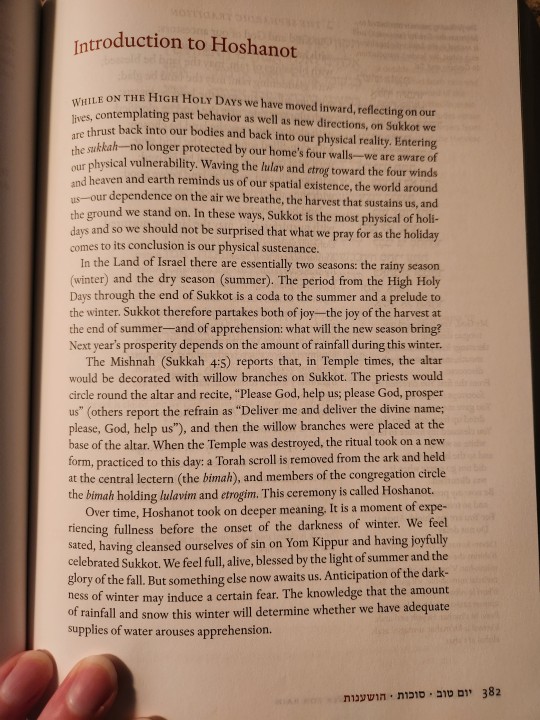
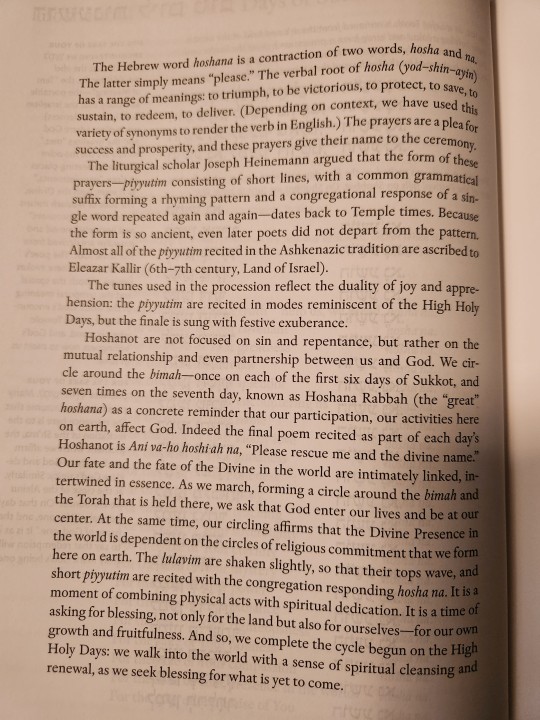

[Image ID is of the Lev Shalem siddur, pages 382 & 383 - I tried hard to find a pdf of this that would be readable using a screen reader, but the versions I'm finding cut off at pg. 376 at the latest. If anyone has bandwidth to type this up, I would greatly appreciate it]
For the curious, here is a recording of the Hoshanot liturgy and procession:
youtube
Christians mostly know the word from the gospels and hymns.
Here is what Wikipedia says about its use in Christianity:
Historical meaning
Since those welcoming Jesus were Jewish, as of course Jesus himself was, some would interpret the cry of "Hosanna" on the entry of Jesus in its proper meaning, as a cry by the people for salvation and rescue.
Christian reinterpretation
"Hosanna" many interpret as a shout of praise or adoration made in recognition of the messiahship of Jesus on his entry into Jerusalem
It is applied in numerous verses of the New Testament, including "Hosanna! blessed is the one who comes in the name of the Lᴏʀᴅ!" (Matthew 21:9,15; Mark 11:9–10; John 12:13), which forms part of the Sanctus prayer; "hosanna in the highest" (Mark 11.10); and "hosanna to the Son of David" (Matt 21:9). These quotations, however, are of words in the Jewish Psalm 118. Although not used in the book of Luke, the testimony of Jesus' entry into Jerusalem is recorded in Luke 19.
In church music
The "Hosanna Anthem", based on the phrase Hosanna, is a traditional Moravian Church anthem written by Bishop Christian Gregor of Herrnhut sung on Palm Sunday and the first Sunday of Advent. It is antiphonal, i.e. a call-and-response song; traditionally, it is sung between the children and adult congregation, though it is not unheard of for it to be done in other ways, such as between choir and congregation, or played between trombone choirs.
The bottom line:
Jews and Christians have different connections, associations, and meanings attached to this word as expressions of our different theologies and texts. The word is derived from a Hebrew word and was created by Jews and is still used by us today. (Like literally today - we are currently in the middle of the Sukkot festival.) Christians changed the meaning to fit within their own context, and pronunciation of the word evolved with linguistic drift over time. In the same way that there's not a reason to pitch a fit over saying Jesus rather than Yeshua, there's no compelling reason to change hosanna back to hosha na; if anything, the distinction helps make it clear that it's effectively a different word and concept from ours.
On the other hand, I do think Christians ought to know the original meaning of the word if they're going to use it. To only ever know their version when it was derived from ours is yet another small way of playing into supercessionism by erasing and replacing the Jewish context of things that were originated in Judaism that Christians have embedded in Christianity. While the Christians of today cannot unwind the supercessionism of Christian history, they *can* choose to understand their present Christianity in ways that do not play into supercessionism and that respect the Jewish community of today.
I hope this was helpful and gives folks a new perspective on an obscure Hebrew word!
473 notes
·
View notes
Text
Hey folks who are observing Advent this year, the patriarchs and bishops of Jerusalem have put out a statement to Christians across the world that I recommend reading. I also invite you to join in extra prayer and almsgiving and (if it’s safe for you) fasting in the lead up to Christmas this year. Feel free to DM me if you want to talk about any or all of those. Preparing for the feast of the Incarnation is a good opportunity to ground ourselves in the humanity of all people and to offer what we can towards the hope of a lasting and life-giving peace. Blessings to y'all in this season.
292 notes
·
View notes
Note
Hello, I really don’t want to be rude or anything like that but I would love to know any more information about the Christians in Palestine, Lebanon and Syria like, is it true Gaza had family lineages dating back to Jesus Christ? Asking because Ziocucks love making it seem as if Christians don’t exist over there
omg not rude at all, actually this is my favorite thing to talk about (it was a major focus of this blog prior to Al-Aqsa Flood) it's a huge topic so I'll link a ton of resources, but to answer your main question: yes, many Palestinian Christians in Gaza and elsewhere can trace their family history with Christianity back to the 1st century. the Christian community in Gaza is said to have been founded by the apostle Philip. the first bishop of Gaza was the apostle Philemon, the recipient of a Pauline epistle. a core zionist myth is the idea that contemporary Palestinians only arrived in Palestine in the 7th century or even the 20th century (see the links for debunking). but there's plenty of documentation of continuous Christian (and Jewish) presence in Palestine before, during, and after the emergence of Islam. Palestinians (and Levantine ppl more generally, but esp Palestinians because of the totality of their colonial dispossession—stories are often literally the only heirlooms refugee families have) typically have very strong family oral histories going back many centuries, so if a Palestinian tells you their family has been Christian since the time of Christ, take their word for it. community continuity is also about more than family trees—even if someone's family came to Christianity later, they're still part of the continuous living heritage of their community. the continuity of Palestinian Christianity is also evidenced by Palestinian holy sites. because Christianity was illegal in the Roman Empire until Constantine took power, dedicated churches weren't built until the 4th century, but many of these churches were built around existing sites of covert worship—for example the Church of the Nativity in Bethlehem was built around a grotto that was already venerated as the site of Jesus' birth, the Church of St. John the Baptist in 'Ayn Karim (a forcibly depopulated suburb of Jerusalem) was built over a 1st century rock-cut shrine marking the site of John the Baptist's birth, and the Church of the Multiplication in Al-Tabigha (a destroyed and forcibly depopulated village on the shore of Lake Tiberias) was built over a limestone slab believed to be the table were Jesus fed the multitude. throughout the Levant there are also many ancient shrines (maqamat) that are shared sites of prayer for both Christians and Muslims; in Palestine many of these sites have been seized by the occupation and Palestinians are prevented from visiting them.
Palestinian Christian communities who are able to travel to the villages they were expelled from in the Nakba will sometimes return there to celebrate weddings and holidays in their ancestral churches, e.g. in Iqrit and Ma'alul (x, x). of course because the occupation heavily restricts Palestinian movement this isn't possible for most refugees.
here's some resources to get you started but feel free to hmu again if you have any more specific questions! Zionism and Palestinian Christians Rafiq Khoury, "The Effects of Christian Zionism on Palestinian Christians," in Challenging Christian Zionism (2005) Mitri Raheb, I am a Palestinian Christian (1995) Mitri Raheb, Faith in the Face of Empire: The Bible Through Palestinian Eyes (2014)
Christ at the Checkpoint: Theology in the Service of Justice and Peace (2012) Faith and the Intifada: Palestinian Christian Voices (1992) The Forgotten Faithful: A Window into the Life and Witness of Christians in the Holy Land (2007) Faith Under Occupation: The Plight of Indigenous Christians in the Holy Land (2012) Palestinian Christians: The Forcible Displacement and Dispossession Continues (2023) Donald E. Wagner, Dying in the Land of Promise: Palestine and Palestinian Christianity from Pentecost to 2000 (2003)—can't find it online but worth checking your library for
Pre-Zionist History James Grehan, Twilight of the Saints: Everyday Religion in Ottoman Syria and Palestine (2016) Ussama Makdisi, Artillery of Heaven: American Missionaries and the Failed Conversion of the Middle East (2008) Kenneth Cragg, The Arab Christian: A History in the Middle East (1992) Christopher MacEvitt, The Crusades and the Christian World of the East: Rough Tolerance (2007) John Binns, Ascetics and Ambassadors of Christ: The Monasteries of Palestine 314-631 (1996) Derwas Chitty, The Desert a City: an Introduction to the Study of Egyptian and Palestinian Monasticism Under the Christian Empire (1966) Aziz Suryal Atiya, A History of Eastern Christianity (1968) Michael Philip Penn, When Christians First Met Muslims: A Sourcebook of the Earliest Syriac Writings on Islam (2015) Early Christian Texts The Acts of the Apostles (1st century, Palestine. yes I'm recommending the bible lol but I promise I'm not trying to evangelize, it just really paints a good picture of the birth of Christianity in Jerusalem and its early spread) The Didache (1st or 2nd century, Palestine or Syria—the earliest known catechism, outlining how Christians were supposed to live and worship) Cyril of Scythopolis, The Lives of the Monks of Palestine (6th century) Sayings of the Desert Fathers and Desert Mothers (early Christian monastics)
for more resources specific to my tradition, the Maronite Church, see this post. for other misc Syriac tidbits see my Syriac tag. this is just scratching the surface so again, if you (or anyone else who sees this post!) have more specific interests lmk and I can point you in the right direction
133 notes
·
View notes
Photo

Saint Alexander of Jerusalem Died: 251 Feast Day: March 18
Saint Alexander of Jerusalem was a Bishop and martyr. He was a student of Origen in Alexandria and as Bishop at Jerusalem had an extensive theological library. For steadfastly proclaiming the faith, he was imprisoned two times and when the wild beasts refused to devour him, he was carried off as a prisoner to Caesarea and as the historians say, "The glory of his white hairs and great sanctity formed a double crown for him in captivity”.
Prints, plaques & holy cards available for purchase here: {website}
53 notes
·
View notes
Text
What's going on in the Armenian Quarter of Jerusalem? a timeline
Background
700s-1920s: Armenian Christians immigrate to Palestine, at first due to the holy sites there and later (after 1915) fleeing the Armenian genocide. Most of them end up living in a section of Jerusalem known as the Armenian Quarter. An Armenian church / Patriarchate is established that has authority over Armenian Apostolic Christians everywhere.
1923-1947: Britain (who had been given the "mandate," aka direct governmental control, of Palestine by other European colonial powers), empowers Patriarchates in Jerusalem (church leadership) to do things like select their own leaders and sell land without oversight from their communities. This gives Britain more authority and prevents regular Palestinian people from knowing what's going on when it comes to church business including secret real estate deals.
2005-2019: Land in Jerusalem belonging to the Greek Orthodox Patriarchate is sliced up, sold, and developed despite attempts to fight it in Israeli courts.
July 2021: The Armenian Patriarchate makes a deal leasing 2.7 acres of land to real estate / development company Xana Gardens (based in Dubai and owned by Israeli businessman Danny Rothman) for between 49 and 98 years. The deal is made without proper oversight and approval, including from within the Patriarchate.
The land in question includes the historical Cows' Garden (Hadiqa al-Baqar / حديقة البقر), now a parking lot; part of a church school; a garden; and five family houses. It makes up about 1/4 of the total land in the Armenian Quarter. No one knows that more than just Cows' Garden is affected.
Xana Gardens wants to build a luxury hotel on some of this land, including Cow's Garden.
Events in 2023
May: Details of the nature of the real estate deal come out. The government of Jordan (I think? these news reports are written in the passive voice) and Armenian institutions try to contact the Patriarchate to express concern about the handling of historically significant sites. The Patriarch does not respond.
11 May: Jordan and Palestine suspend their recognition of Patriarch Nourhan Manougian.
26 October: The Patriarchate announces that it has contacted Xana Gardens to cancel the deal. Xana Gardens does not respond.
Later on 26 October (around 3pm): Israeli bulldozers arrive at Cows' Garden and start tearing up pavement and demolishing a wall. Armenians rush to stand in front of bulldozers and prevent further destruction.
5 November: Rothman and other representatives of Xana Gardens arrive with 15 settlers and tell local Armenians that the land is theirs and they need to leave. Some of the settlers have guns and leashed dogs. About 200 Armenian Palestinians arrive and force the settlers to stand down.
12 and 13 November: Xana Gardens sends bulldozers to Cows' Garden. They do not have necessary permits. Armenians set up constantly rotating vigils at the Gardens and make barricades with pieces of metal and their cars.
15 November, 4:30pm: Israeli settlers drive a convoy of cars into the Garden. Armenians gather around the barricades. The police back the settlers and arrest three Armenians, including one child.
28th December: 30+ settlers attack a group of Armenian bishops, priests, deacons, and seminary students (including Bishop Koryoun Baghdasaryan, the director of the Patriarchate's real estate department) with sticks and nerve agents / tear gas, injuring several.
28th December, later: The Patriarchate releases a statement attributing the attack to Xana Gardens. The development company does not want the Patriarchate to continue trying to reverse the deal through the court system.
121 notes
·
View notes
Photo

The Letters of Paul the Apostle to the Gentiles
Paul was a member of the Jewish Pharisees in the 1st century CE, who experienced a revelation of the resurrected Jesus Christ. In this vision, Jesus commissioned him to be the apostle (herald) to the Gentiles (non-Jews). After this experience, he traveled widely throughout the Roman Empire, spreading the "good news" that Jesus would soon return from heaven and usher in the kingdom of God on earth.
In the New Testament, we have 14 letters traditionally assigned to Paul, but the scholarly consensus now recognizes that of the 14, seven were written by Paul:
1 Thessalonians
Galatians
Philemon
Philippians
1 & 2 Corinthians
Romans
2 Thessalonians, Ephesians, and Colossians remain debatable among some scholars. The other major letters (1 &2 Timothy and Titus) were most likely written by disciples of Paul’s, using his name to carry authority. The letters that have survived range between 52 and 60 CE, and although we cannot pinpoint when Paul’s letters were collected, Clement, a bishop in Rome in the 90s CE, quoted from 1 Corinthians.
The Nature of the Letters
We understand these letters to be circumstantial. They were not written as systematic theology or as treatises on Christianity. The letters are responses to specific problems and circumstances as they arose in his communities. Paul spent time in cities establishing a group and then moved on. He received letters and sometimes reports with detailed questions or advice on how to settle conflicts. Unfortunately, when Paul’s letters were saved and circulated, the original letters from the communities were not preserved. The reconstruction of the original problems can only be determined by Paul’s responses.
Known as the most famous convert in history (from the Acts of the Apostles), Paul did not actually undergo conversion. Conversion assumes changing from one religious system to another, but at the time, there was no Christian system for him to convert to. Paul himself was ambiguous when it came to his self-identity:
To the Jews I became like a Jew... To those under the law I became like one under the law (though I myself am not under the law) ... To those not having the law I became like one not having the law (though I am not free from God’s law but am under Christ’s law) ... I have become all things to all people. (1 Corinthians 9:20-22)
In relation to what happened to Paul, it is better to follow what he says, in that he was 'called'. This is the tradition of the way in which the Prophets of Israel were called to their individual missions.
I want you to know, brothers and sisters, that the gospel I preached is not of human origin. I did not receive it from any man, nor was I taught it; rather, I received it by revelation from Jesus Christ. (Galatians 1:11-12).
Paul argued that this experience gave him as much authority as the original circle in Jerusalem (Peter, James, and John). Paul’s call to be the Apostle to the Gentiles was shocking because, as he freely admitted, he had previously "persecuted the church of God" (Galatians 1:13). He never really explained what he did, nor why he did it. It is in Paul’s letters that the name Jesus is combined with Christ, the Greek for the Hebrew messiah ("anointed one"). Understood as a title, "Jesus the Christ", it became common as a phrase that indicated his identity and function.
Continue reading...
77 notes
·
View notes
Text










Medieval Women Week || free day! ↬ Saint Radegund
Long before she founded her convent in Poitiers, Radegund expected to live out her days as a queen. She was born into the royal house of the Kingdom of Thuringia, in what is today central Germany. The precise year of her birth, as with so many events in her life, cannot be determined with certainty, but it fell in either the late 510s or, more likely, the early 520s. While she was still very young, Radegund lost both of her parents. Yet this tragedy was soon eclipsed by the downfall of her dynasty, and the slaughter of most members of her family, following an invasion by the Franks in 531. King Chlothar I took Radegund as his captive and later made her his bride. For several years, the young Radegund reigned as queen alongside the very man who had butchered many of her relatives, until Chlothar went one step further and caused her surviving brother to be killed. Following this unforgivable crime, Radegund took religious vows and, after living for a few years in a villa, she founded her grand convent in Poitiers during the 550s. There she remained, in pious devotion and ascetic self- denial, until her death in 587 (outliving Chlothar by more than a quarter century). In what might be considered her greatest single achievement, she obtained from the imperial court in Constantinople what were thought to be fragments of the ‘True Cross’, the wood used to crucify Jesus on the hill of Golgotha in Jerusalem. Facing down opposition from her local bishop, Radegund managed to have the relic placed within her convent, which subsequently acquired the name of ‘Holy Cross.’ — Radegund: The Trials and Triumphs of a Merovingian Queen by E.T. Dailey
#medievalwomenweek#radegund of poitiers#merovingians#french history#german history#european history#medieval#history#nanshe's graphics
48 notes
·
View notes
Text
St Sabbas Orthodox Monastery has been asked by St Porphyius Orthodox Church in Gaza to fundraise on their behalf.
My name is Archimandrite Pachomy (John Belkoff) and I am the abbot of St. Sabbas Orthodox Monastery in Harper Woods, Michigan. On the evening of October 19 2023, the campus of St. Porphyrius Orthodox Church in Gaza, a community which dates back to the 5th century A.D., was struck by several missiles; 18 civilians were killed, including elderly and children. The church halls were providing shelter to hundreds of both Muslim and Christian civilians. His Eminence, Archbishop Alexios Moschonas of Tiberias lives at St. Porphyrius as the local bishop and is a personal friend of mine. As often as circumstances allow, he calls me and gives updates about how he and the people who make up his flock are struggling to survive. St. Sabbas Monastery is raising money to contribute to the humanitarian welfare of civilians taking shelter at the campus of St. Porphyrius Church. People are in dire need of fuel, power, water, food, and other basic necessities. To that end we are asking for the support of people of good will across the globe. All proceeds will be directed from St. Sabbas to the official Greek Orthodox Patriarchate of Jerusalem, to which St. Porphyrius belongs. Please read more about our cause from this article of the Detroit Free Press. Thank you and God bless you all.
56 notes
·
View notes
Text
Let me talk Church and the Revolution

Okay, let me post this preemptively. Because I already know that soon enough those people looking for reasons to hate on Castlevania Nocturne because it is not like the games will also come to cry a river about "they depict the church as evil!!!!"
So, let me quickly talk about the role of the church in the French Revolution. Because there is something you gotta understand about the Church during the French revolution: That there was not THE Church.
Basically within the Catholic church in France there was a fracture over the entire revolution happening. A lot of the higher ranked clergy men stood on the side of the nobles and royals, while a lot of the lower ranked clergymen stood with the revolutionaries. The reason behind that mostly was money.
See, before the revolution the church was allowed to collect taxes themselves, while also being tax exempt. So they did not have to pay taxes on all the stuff they sold and made to the nobility. Which was why the bishops and general higher ups within the church could have the lavish lifestyle of nobility themselves, often of course ignoring their vows.
Meanwhile a lot of lower clergy (and especially certain groups of monks - especially the franciscans) were like: "We are all equal in the eyes of god. Rich folks do not get into heaven. Equality is what god wanted from us" and supported the revolution because of it.
But of course there was also the thing that the show mentioned: Given the show is set in summer it seems (probably just before the Reign of Terror) it would have been not even a year before that a lot of clergy got slaughtered. Why did they get slaughtered?
Well, short explanation: Royalists and also some of the bishops provoked the war with Prussia in an attempt to overthrow the revolutionary forces with the help of the Prussian military. This of course failed and the revolutionaries were out for blood. So nobles fled into the churches for sanctuary. And in retaliation a lot of clergy died for haboring the nobles in question.
And, yeah. There is of course the other aspect: The church at the time for a lot of historcal and religious reasons very much supported slavery. Meanwhile this is already a point where the revolution at large had decided that slavery should be done away with. And that leads to what we see in the show here: Clergy going on about the revolution being against "the natural order".
(Being frank: I LOVE that they brought this into the show. Which is almost like a whole other thing I could write about. The entire idea of the revolution and the "natural order" and how it is all linked to colonialism.)
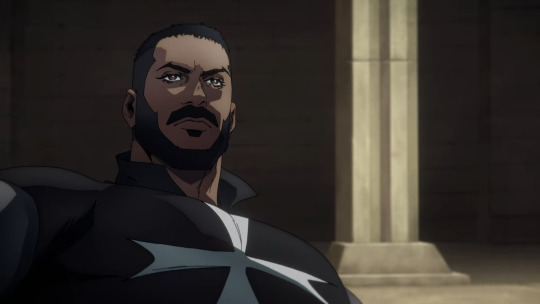
Another interesting part here is the order the abbot and Mizrak are from. On the Castlevania discord server I already went into a whole thing trying to figure that out, but my last idea was right: They are from the Knights Hospitaller. The order of St. John.
This order arose during the crusades and as the name Knights Hospitaller suggests: Yeah, they mostly created hospitals (though historically those were not only to cure the sick, but also to be a home - "hospitality" - for those on the road). They were based in Jerusalem for a while, but ended up moving to Malta, which was of course for a long while ruled by France. They referenced here that the Abbot came to France from Malta, which is the reason.
But yeah, they actually were about helping people for the most part. But they also made money from it. And when the revolution came, they seized all the assets from the order, which made the order join into the ranks of clergy who stood against the revolution by 1792.
#castlevania#castlevania netflix#castlevania nocturne#french revolution#european history#christianity#knights hospitaller#france#malta
461 notes
·
View notes